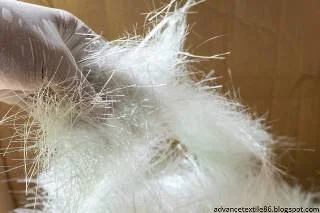Glass fiber
Glass fiber is a material that contains a number of
extremely fine fibers in the glass. The number of raw materials from melting glass fibers sand for silica, clay for
alumina, calcite for calcium oxide, and colloidal for boron oxide are made in
different compositions by changing. Therefore, different types of glass fibers show different performances such as
higher corrosion resistance or higher mechanical properties using higher
amounts of silica or other sources. These fibers products are classified
according to the type of attachment where they are used.
It
has almost mechanical properties similar to other fibers like polymers and
carbon fibers. It is much less and significantly less brittle when used in
composites, although it is not as rigid as carbon fiber. These fibers are used
as a reinforcing agent for many polymer products; to form a very strong and
relatively lightweight fiber-reinforced polymer composite material known as
glass-reinforced plastic.
Properties of glass fiber
i. Glass fiber has higher tensile
strength than steel wire of the same diameter; although underweight.
ii.
Its dimensional stability is usually 3% or less with a slightly increased load.
iii.
It has high heat resistance power.
iv.
It has high fire resistance power.
v.
Glass fibers are better thermal
conductivity.
vi.
It has good chemical resistance properties.
vii.
It has outstanding electrical features.
viii.
It has almost mechanical properties similar to other fibers such as polymers
and carbon fibers.
ix.
Although it is not as rigid as carbon fiber, it is much less and significantly
less brittle when used in composites.
Chemistry of glass fiber
The
glass fiber basis of textile-grade is silica, SiO2 that pure form
exists as a polymer, (SiO2) n. It does not have a true melting
point, but it does soften to 1200°C, where it begins to decline. At a
temperature of 1713°C, most molecules can move freely. If the glass is extruded
and cooled rapidly at this temperature, it will be unable to form the original
structure. At the making of polymer, it forms the SiO4 group that is
configured as a tetrahedron with silicon atoms in the center and four oxygen
atoms in the corners. These atoms divide the oxygen atoms into a network bound
at the corners. Silica has similar strengths on a molecular basis between
vitreous and crystal states, which implies that the glass form is extremely
stable. To induce crystallization, it must be heated to temperatures above 1200
° C for a long time.
Applications of glass fiber
i.
Glass fibers are used in making mats
and fabrics for thermal insulation, electrical insulation, sound insulation,
high-strength fabrics, or heat- and corrosion-resistant fabrics.
ii.
It is used to reinforce different materials like tent poles, pole vault poles,
arrows, bows, and crossbows.
iii.
It is extensively used for making FRP tanks and vessels.
iv.
Glass fiber-reinforced polymer rebar is used instead of steel rebar.
v.
Recently it is also used in biomedical applications.
vi.
It is used in electronic applications for improving electronic properties.










0 Comments